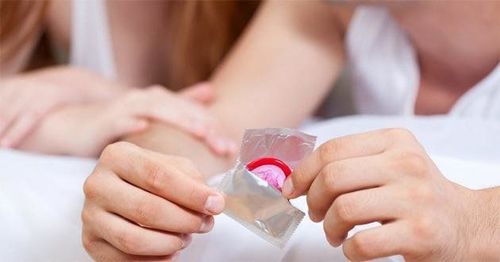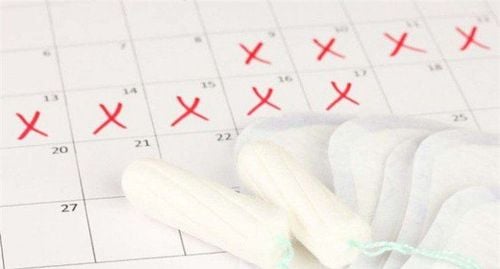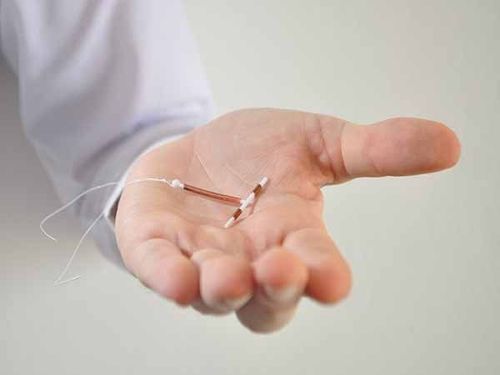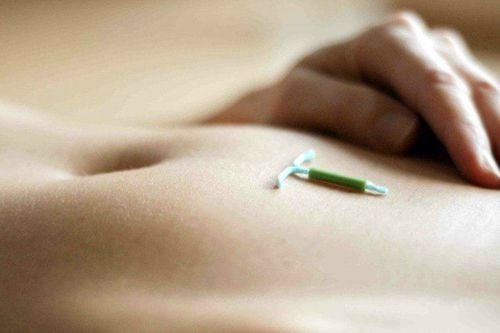This article has been professionally consulted by Dr. Pham Thi Mai Nhung, Obstetrician and Gynecologist, Department of Obstetrics and Gynecology, Vinmec Da Nang International Hospital.
If you have unprotected sex, there is a possibility of conception at any time, including during and immediately after your period. Therefore, if you are not planning to become pregnant, you should consider using contraception to avoid unintended pregnancy.
1.How to Calculate the Menstrual Cycle
The menstrual cycle begins on the first day of your period and continues until the first day of your next period.
The most fertile period in a cycle is during ovulation, which occurs when an egg is released from the ovary. This typically happens 12 to 14 days before the start of the next menstrual cycle.
There is no definitive guarantee that you will not become pregnant immediately after your period, although it is less common. It is important to remember that sperm can sometimes survive in the body for a period after unprotected intercourse. Therefore, it is still possible to conceive after your period ends if ovulation occurs early, especially for individuals with naturally short menstrual cycles.
Thus, there is no reliable method for calculating "safe days" to prevent pregnancy without using contraception.
2. Fertile Window
Sperm can survive inside the uterus for up to five days after intercourse, and pregnancy can only occur if sperm is present in the uterus or fallopian tubes during ovulation.
For most women, ovulation happens around Day 14 of the menstrual cycle. However, having unprotected sex during or outside the ovulation period does not guarantee safe contraception.
Additionally, women with shorter cycles (averaging 28 to 30 days) may still be at risk of pregnancy if they have sex during this time. For instance, having sex at the end of the cycle combined with early ovulation can still lead to conception. Therefore, using contraceptives, such as condoms or other protective methods, remains the safest and most effective way to prevent pregnancy.

3. Ovulation and Conception
Ovulation occurs when a mature egg is released from the ovary. Approximately once a month, a mature egg is released into the fallopian tube. From there, it travels toward the sperm waiting in the fallopian tube and uterus.
An egg can survive for 12 to 24 hours after leaving the ovary, while sperm can live up to five days after intercourse. If the egg and sperm meet during this timeframe, fertilization occurs.
It is possible to become pregnant immediately after menstruation if intercourse occurs at the end of the cycle and ovulation begins shortly after. Conversely, the likelihood of pregnancy just before menstruation is very low, but this is not a reliable "safe day" for avoiding pregnancy.
You can calculate "safe days" by tracking ovulation. Waiting 36 to 48 hours after ovulation significantly reduces the chances of conception. If fertilization does not occur, the uterine lining sheds, and the menstrual cycle begins anew.
4. Monitoring the Ovulation Cycle
Tracking your ovulation cycle is a method to determine the optimal time for conception. It can also aid in preventing pregnancy and is a reliable method for fertility control. However, it may take several months of recording monthly cycles to identify the pattern of ovulation accurately.
4.1. How to Track the Ovulation Cycle
- Over a period of 8 to 12 months, record the start date of your menstrual cycle and count the total number of days in each cycle. Note that the first full day of your period counts as Day 1.
- Next, identify the shortest and longest cycles from your records. Determine the first day of the ovulation window by subtracting 18 days from the shortest cycle. For instance, if your shortest cycle is 27 days, subtract 18 from 27, resulting in Day 9. To find the last day of the ovulation window, subtract 11 days from the longest cycle. For example, if your longest cycle is 30 days, subtract 11 from 30, resulting in Day 19.
- The time between these two days represents the fertile period. In the example above, it would be from Day 9 to Day 19. To avoid pregnancy, refrain from having unprotected sex during this time.
4.2. Using the Ovulation Cycle Chart as a Contraceptive Method
Ovulation occurs on one specific day during the cycle, and the released egg is viable for 12 to 24 hours. However, because sperm can survive in the body for up to five days, the fertile window extends beyond just the ovulation day. For effective contraception, avoid unprotected sex throughout the fertile window identified using the tracking method. This natural method requires careful calculation and consistency in tracking to minimize the risk of unintended pregnancy.

4.3. Ovulation Tracking Tools
To track your ovulation cycle, mark the first day of your menstrual cycle on a calendar and continue this process for several months. Alternatively, you can use fertility tracking apps, such as Glow Ovulation or Clue Period Tracker, for more convenience and accuracy.
5. Other Methods
If you have a regular menstrual cycle, it can help predict your ovulation period, making it more effective for pregnancy prevention. However, factors like stress, diet, or intense exercise can cause variations in the cycle from month to month.
Tracking ovulation is an effective method for achieving pregnancy. However, if you want to avoid pregnancy, it is advisable to consult with a doctor to select the most appropriate contraception method for your needs.
Other Fertility Awareness Methods:Basal Body Temperature (BBT) Monitoring, Cervical Mucus Observation, Ovulation Prediction Tools.
Tracking Basal Body Temperature (BBT)
Basal body temperature refers to your body’s temperature when it is at complete rest. It slightly increases after ovulation, making it a helpful indicator for tracking your fertility cycle.
Use a thermometer to record your temperature each morning immediately upon waking, before getting out of bed. Then, chart your daily temperature readings and observe a slight increase of approximately 0.3°C, which indicates the ovulation process.
This method helps determine when ovulation occurs. It is also more effective in preventing pregnancy by waiting to engage in unprotected intercourse until a few days after the temperature spike.
Cervical Mucus Observation
Some women notice an increase in cervical mucus near ovulation. This occurs due to a rise in estrogen levels during this time, prompting the cervix to produce more mucus.
The mucus becomes clearer and more elastic, with a consistency similar to raw egg whites. The body is most fertile during the days when this increase in cervical mucus is observed.
Ovulation Prediction Kits
These kits work by testing urine for an increase in luteinizing hormone (LH). LH surges 24 to 48 hours before ovulation. To avoid unintended pregnancy, refrain from unprotected sexual activity during this period if you are trying to prevent conception.
Additionally, there are several highly effective contraceptive options, including birth control pills, intrauterine devices (IUDs), and contraceptive injections such as Depo-Provera. These methods are over 99% effective when used as directed. However, condoms remain an effective form of birth control and also offer protection against sexually transmitted infections (STIs).

In summary, engaging in unprotected sexual intercourse outside the ovulation cycle may reduce the likelihood of pregnancy, but the success rate remains uncertain. Tracking and identifying ovulation can also lower the chances of conception. However, natural family planning methods have a failure rate of up to 25%. Therefore, it is advisable to consult a doctor to choose the most suitable and effective contraceptive method.
Reference sources: healthline.com, nhs.uk
To arrange an appointment, please call HOTLINE or make your reservation directly HERE. You may also download the MyVinmec app to schedule appointments faster and manage your reservations more conveniently.








